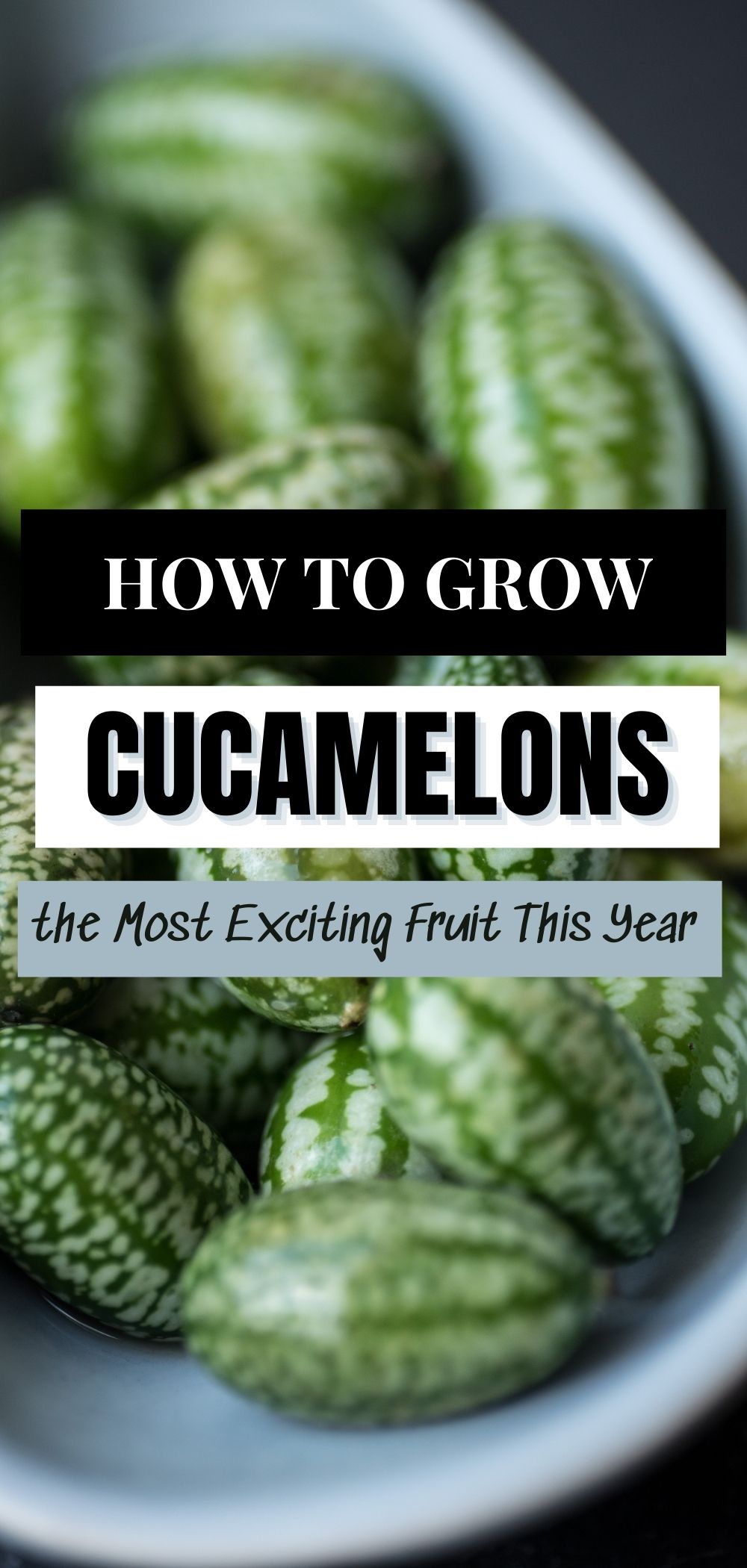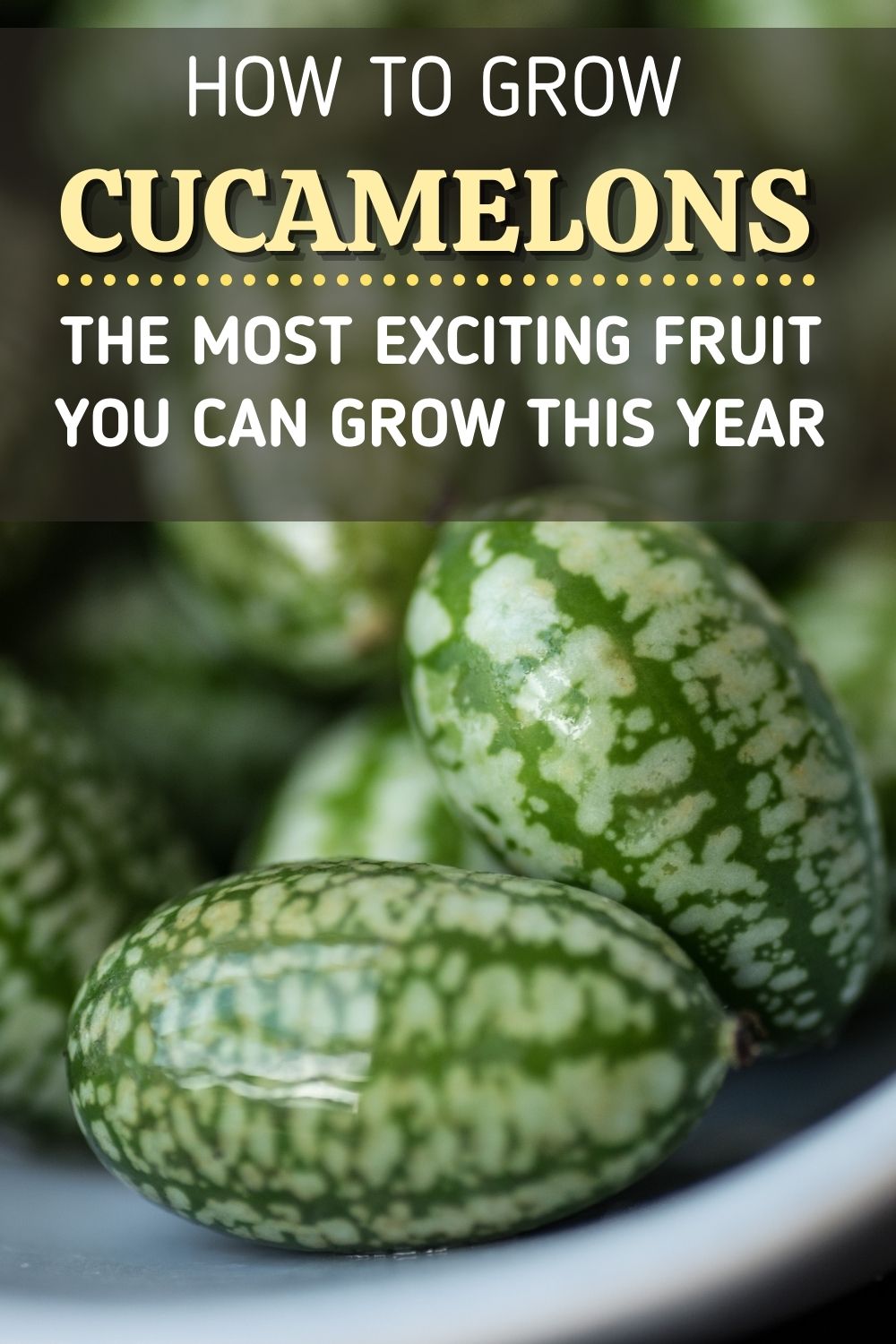GENERAL GARDENING
How To Grow Cucamelons – The Most Exciting Fruit You Can Grow This Year
 Have you ever heard of cucamelons? This is a fruit you should definitely consider growing in your garden. This fruit comes in the size of a grape, looks like a mini-watermelon and tastes like cucumbers and lime. It is a sour fruit that grows on a thin vine and it is surrounded by ivy-like leaves. Cucamelons aren’t some strange genetically modified hybrid, but they are a delicacy from Central America and people have been eating them since pre-Columbian times.
Have you ever heard of cucamelons? This is a fruit you should definitely consider growing in your garden. This fruit comes in the size of a grape, looks like a mini-watermelon and tastes like cucumbers and lime. It is a sour fruit that grows on a thin vine and it is surrounded by ivy-like leaves. Cucamelons aren’t some strange genetically modified hybrid, but they are a delicacy from Central America and people have been eating them since pre-Columbian times.
Even though cucamelons are small they are full of nutrients, and abundant in vitamins and minerals, antioxidants and fiber, while also being low in calories. They contain a high level of lycopene, a carotenoid known to improve cardiac functioning, as well as beta-carotene, known for its remarkable antioxidant and anti-aging properties that help prevent age-related cardiac conditions and much more.
You can barely find them in markets, so a great option is to grow them in your garden!
11 Steps To Growing Perfect Cucamelons
1. Purchase the seeds
Cucamelons aren’t easy to find in local garden markets, so your best chance is to buy them online. They don’t cost much more than any other regular seed. The crops that do best in your garden are those that are carefully maintained and that match your growing conditions.
When your plants establish, save some seeds. Just pick up a ripe fruit that has fallen to the ground and place it somewhere cool. After two weeks slice it open and scoop out the seeds. Keep them in a jar with water for 1 week and rinse them, allow them to dry on paper towels in a cool spot. Then, store them in a paper envelope.
2. Climate considerations
Cucamelons are mostly grown as annual vegetables and require a long growing season with at least 65 to 75 days of warm weather, and soil temperatures between 75 and 85 degrees to bear fruit. If you come from the cooler areas, grow them in pots and move them indoors in a bright and warm room when the night temperatures drop below 50.
3. Start cucamelons indoors
It is best if you start cucamelons indoors, April or May is the best time. You can plant them directly into the ground after danger of frost has passed. It is important to have patience, as cucamelons are slow starters compared to cucumbers.
4. Choose your planting location
Cucamelons like full sun and rich, fast-draining soil. Choose a growing site that gets full southern exposure, and allow at least 12-square-inches of space for every plant. Provide them with at least 6 hours of sunlight.
5. Install a wire cage or trellis
Cucamelons need a support structure to keep their stems and fruit off the ground, so you should install a small trellis or tomato cage for them to grow on.
6. The right soil
Cucamelons need lots of nutrietion and very good soil drainage to produce good fruit. You should amend their soil with compost or aged manure and provide nutrition that will last all season. You can amend lean or porous soil with a 2-inch layer of compost worked into the top 6-8 inches of soil prior to planting.
Once you establish them, keep in mind that they don’t need supplemental feeding, other than a light, 3-inch side-dressing of compost each month.
7. Water needs
A steady supply of moisture is necessary for good fruiting in cucamelons. You should provide an inch of water every five to seven days during the summer months, wetting the top 6 to 15 inches of soil every time. When the weather is very hot and dry, increase water to twice a week.
8. Pest issues and re-seeding
Cucamelons are really tolerant to rough conditions. Pests tend to ignore them and disease rarely ever come to them. Even birds don’t mess with cucamelons, meaning pest control is no issue when it comes to these plants.
9. Training the growing vines
The growing vines of the cucamelon won’t exactly fill up your trellis, and those long tendrils usually gasp onto anything they can, you can pull the vines in all sorts of directions and train them by wrapping the vines throughout the trellis in anyway you’d like.
10. Harvesting your cucamelons
You should harvest the fruit when they have reached a nice plump size, about the size of a grape, nice and firm, and about one to one and half inches in length. Pick the first few at a somewhat earlier stage to force more fruit production.
After pollination, it takes about 2-3 weeks for the cucamelon fruit to reach a harvestable size. Harvest your cucamelons by simply picking them off without ripping the plant apart.
11. Pruning
As the season progresses you might need to do just a little prunning. When the vines create a thick mass of foliage, some of the leaves can become choked off from sunlight and will begin to yellow. At this time, trim off any dying leaves.

If you want to find more natural remedies, take a look at the Everyday Root Book!
With 350+ pages, you will be able to replace all of the toxic products and medications in your home with healthier, all-natural alternatives.
You will be confident in knowing exactly what is in the products your family uses and happy with the money you will save every month.
In addition, they offer you three more bonuses + 75% discount only this month!
GET THE EVERYDAY ROOTS BOOK NOW!
Included in this life changing book are:
- 105+ NATURAL HOME REMEDIES – Treat almost any illness with natural ingredients you probably already have in your kitchen.
- 75+ NATURAL BEAUTY RECIPES -Get the best hair and skin you’ve ever had and look younger with these insanely clever natural beauty recipes.
- 35+ DYI HOUSEHOLD PRODUCTS & CLEANERS – Never Buy Toxic Cleaning products again! Save a fortune and your families health with these super simple homemade cleaning products that work better than the chemical ones.


